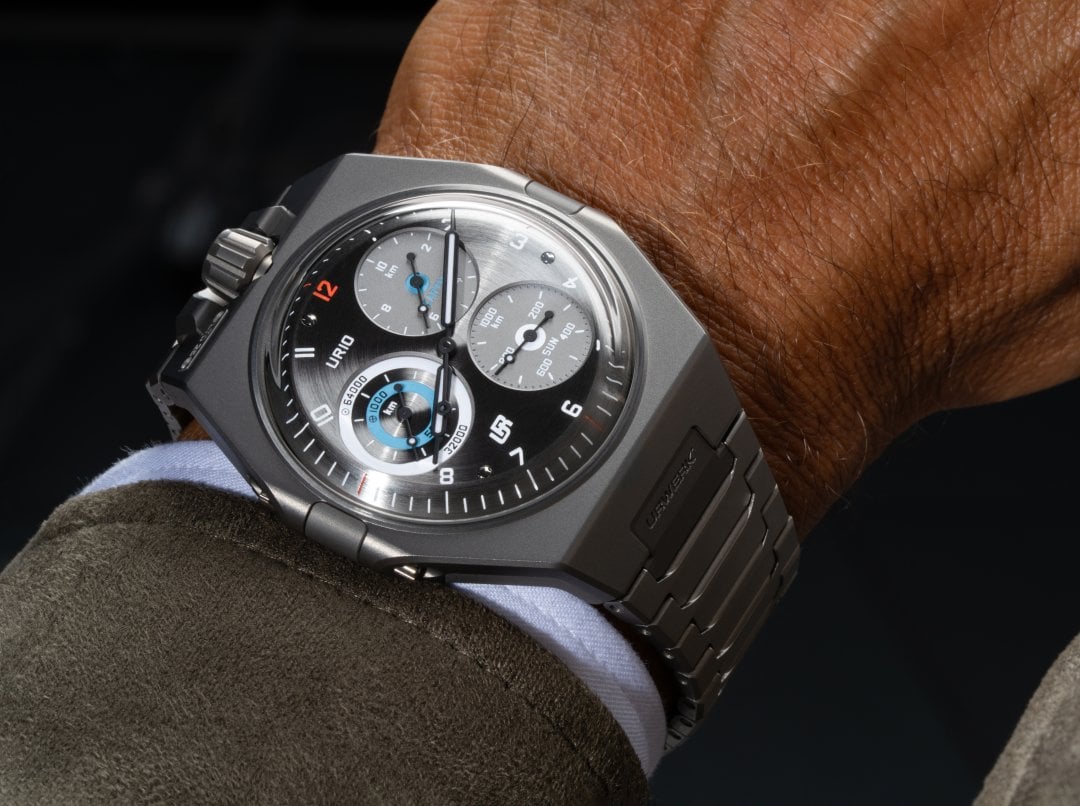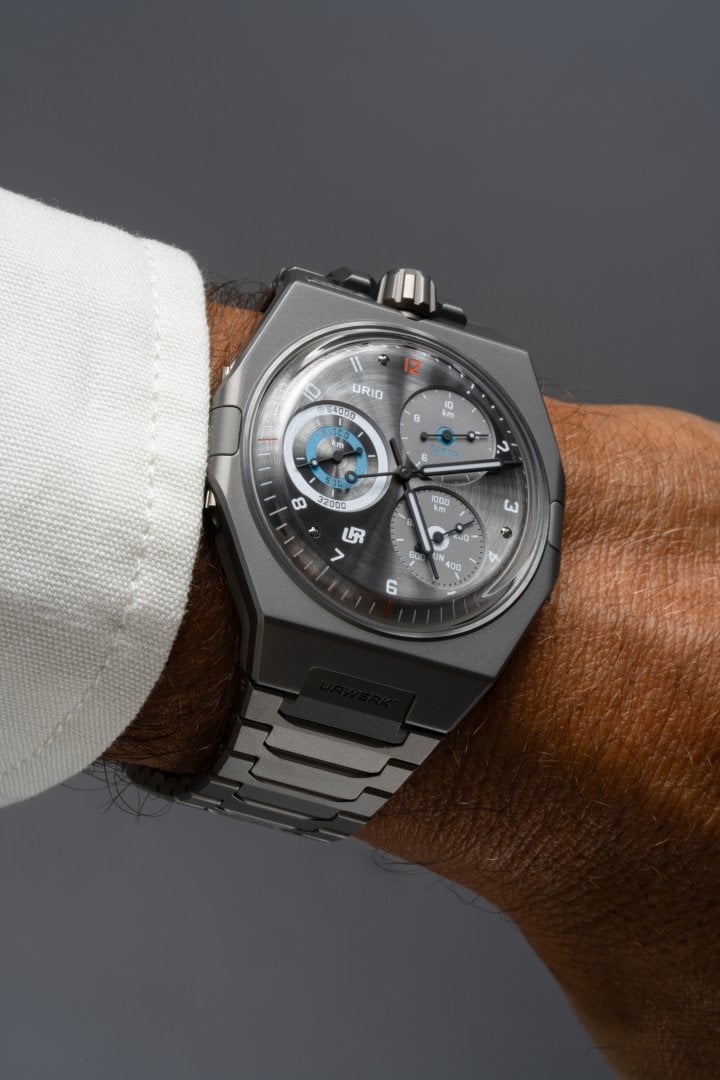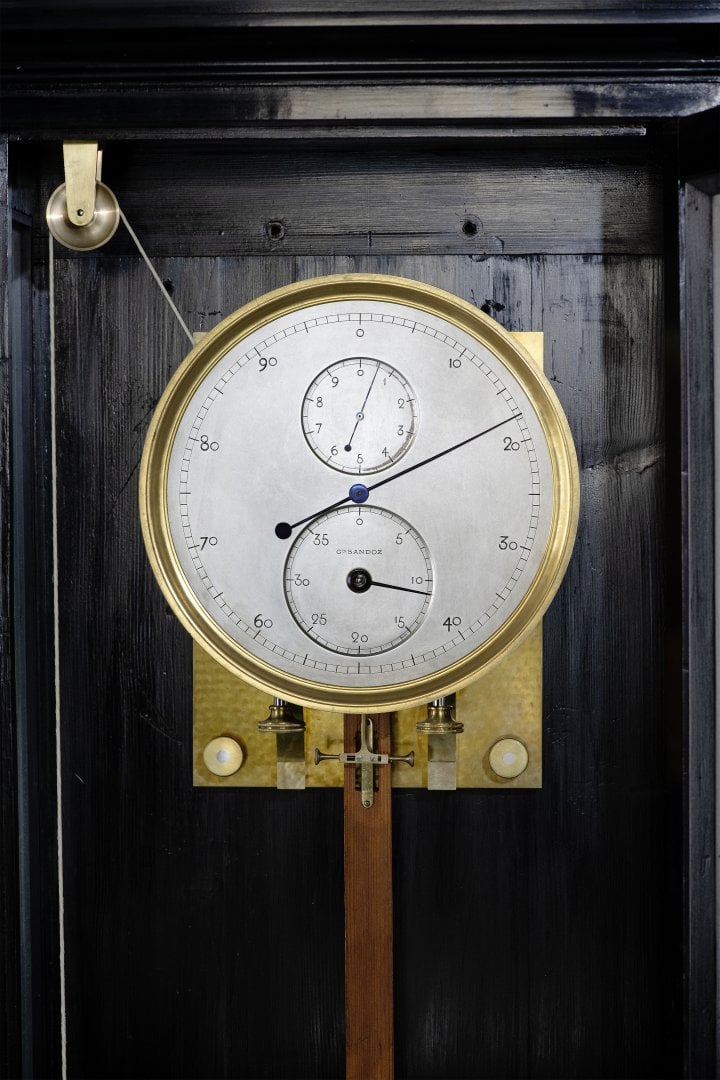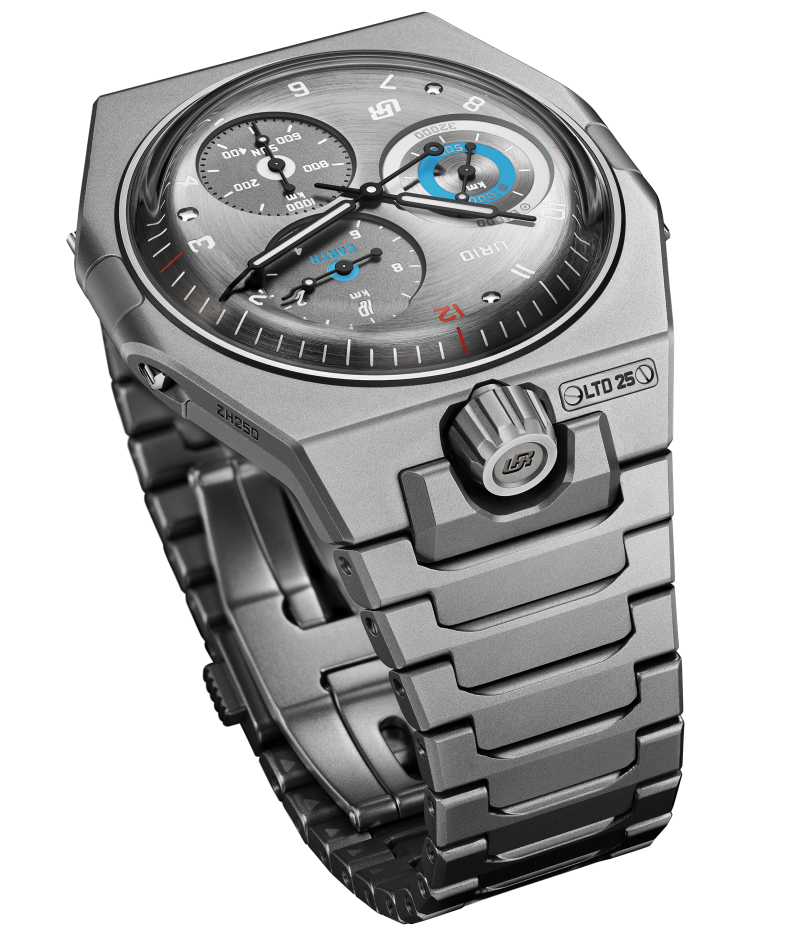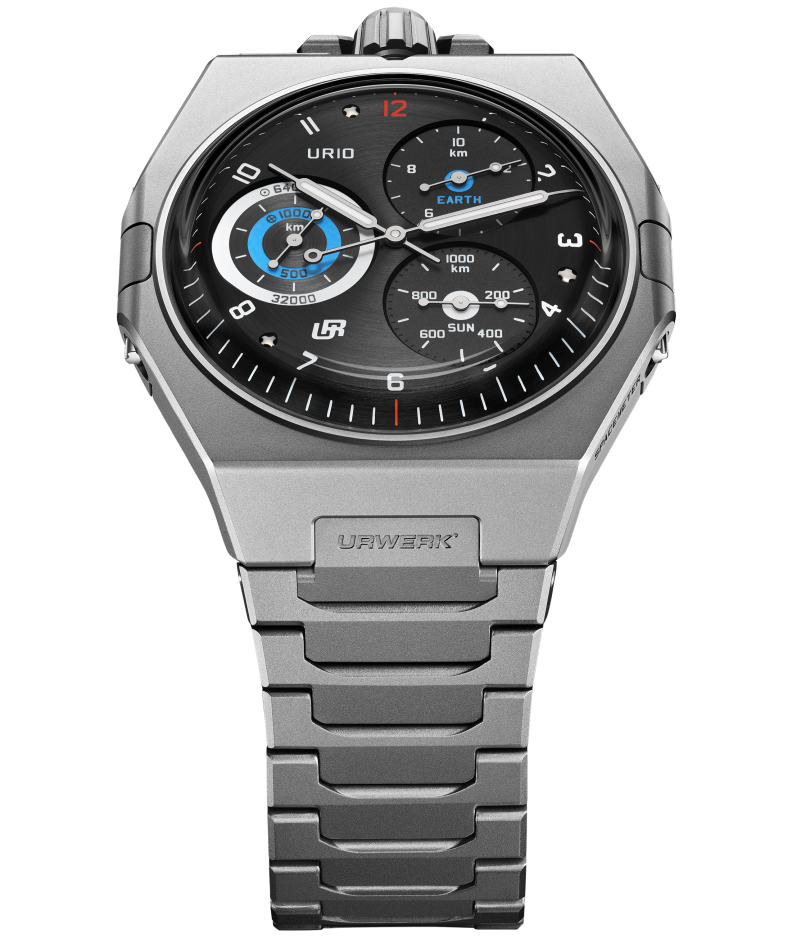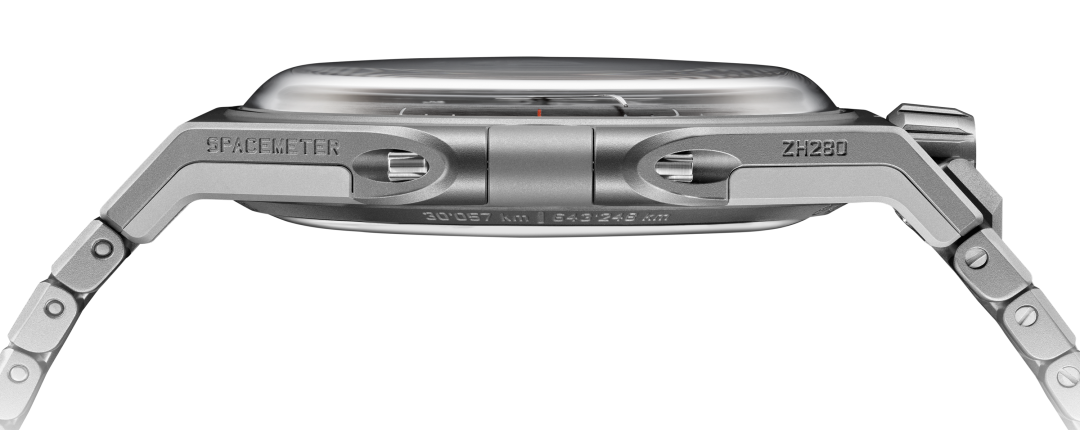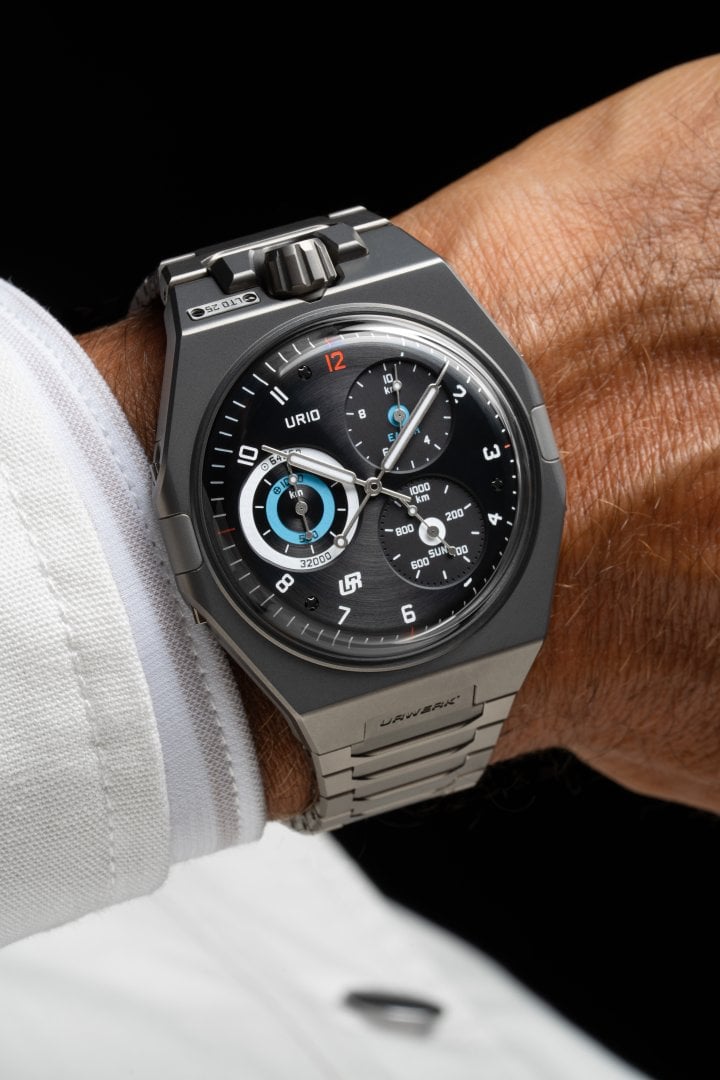Spacing Out With The New Urwerk UR-10 Spacemeter — A Watch That Measures Time And Space
When a watch with hands looks alien, it must be an Urwerk. Recently, the brand introduced a non-digital watch that measures time and space with traditional hands on a round dial while still managing to make your watch brain feel weightless. I was spacing out with the Urwerk UR-10 Spacemeter when it was still under embargo, and it felt good, both on the wrist and in my brain. Urwerk’s latest creation comes in two versions — one with a black dial, the other with a gray dial. Did it feel like a real Urwerk? Did I miss digital time? I will tell you now.
Urwerk does things differently, so when the brand launches a watch with a rounded case and dial and hands to tell time (and space), it is so alien and out of the box that it is released in the “Special Projects” family. A watch with hands might feel a tad unnatural to Urwerk. Still, when I put the black- and gray-dial versions of the new UR-10 Spacemeter on my wrist at the brand’s atelier in the center of Geneva’s old town, they immediately felt good and natural. There are plenty of Urwerk touches to enjoy, albeit in a more conventional setting, which makes this watch easy to wear and a bit easier on the eye, I dare say. But what does it show on its three sub-dials?
Spacing out with the Urwerk UR-10 Spacemeter
The three sub-dials of the UR-10 are not part of the display of a chronograph, calendar, or regulator. Instead, the dials display what the name of the watch implies: it measures things in outer space. To be more precise, the Spacemeter measures the distances our planet travels through the fabric of space-time, and that’s a world first — the three registers function as an astronomical instrument. Interestingly, Urwerk crafted the dial and all the hands in-house. It’s a bit in the spirit of Pipi Longstocking, who famously said, “I have never tried that before, so I think I should definitely be able to do that.”
The sub-dial at 2 o’clock represents Earth. This counter tracks every 10 kilometers the Earth covers in its daily rotation, graduated in 500-meter increments. The sub-dial representing the Sun is at 4 o’clock. In it, you can see it advancing in 20-kilometer steps as this indicator registers each 1,000 kilometers the Earth journeys around the Sun. The sub-dial at 9 o’clock is all about orbiting. It merges both movements, displaying every 1,000 kilometers of rotation and 64,000 kilometers of orbital travel across two synchronized scales.
There’s also a dial on the reverse side of the UR-10. On the back, a peripheral hand indicates the hours on a 24-hour scale, echoing a full rotation of our planet. You will also find the engravings corresponding to Earth’s rotation and revolution, with the former read clockwise and the latter counterclockwise, a nod to the Earth’s counterclockwise revolution. Last but not least, when you put the watch on your wrist, you can read the time on Earth with the central hours, minutes, and seconds hands.
An unusual clock as a source of inspiration
The inspiration for the UR-10 Spacemeter has a prominent place in the Urwerk workshop. It’s a singular pendulum clock signed by Gustave Sandoz, an often-overlooked master of 19th-century chronometry and France’s official Horologist-Mechanic to the King and the Navy from 1874. This clock came into the Baumgartner family through Urwerk co-founder Felix’s father, Gérard, a clock restorer, because of its unusual nature. Gérard bought the clock with three mysterious sub-dials, seemingly unrelated to any conventional time display, and a pendulum that swung far too fast.
With patience and curiosity, Gérard unraveled its enigma, ultimately revealing a planetary trajectory tracker — a mechanical marvel engineered to chart Earth’s rotation. Built on the principles of a regulator, it measured the distance our planet travels across three distinct time scales. Once restored, Gérard passed this extraordinary clock to his son, Felix. “My father, a guardian of horological tradition, gave me a classical clock with regular hands… that did not tell time,” he recalls. The clock inspired the UR-10, the first watch to express Earth’s movements in kilometers while also telling the time on Earth.
Powering time and space
The movement that powers the displays showing time and space is the caliber UR-10.01. The base movement is made in cooperation with Vaucher, and the module is an in-house affair. It’s a one-of-a-kind complication that expresses two rhythms in a single movement. To save as much energy as possible, there are skeletonized LIGA wheels. Some of these weigh 0.015 grams, while others weigh as little as 0.009 grams, the same as an eyelash. Just so you know, “LIGA” is a German acronym for Lithographie, Galvanoformung, Abformung (“lithography, electroplating, molding”)
The movement has two barrels that get that power from a Double Flow Turbine, an evolution of Urwerk’s one-way self-winding system. This patented turbine comprises two stacked propellers that rotate in opposite directions. The double turbine creates an air flow between the two sets of blades, which slows them down and preserves the mechanism. As a bonus, these spinning blades create a captivating spectacle.
Titanium with a touch of steel
As you can see, both versions of the UR-10 Spacemeter use a large amount of titanium. However, steel is also present. The 45.5mm case with a mere 7.13mm thickness (excluding the crystals) has an upper case in sandblasted titanium and a case back in sandblasted steel. As a nod to Gérald Genta’s Nautilus, the front and back parts of the case close with a longitudinal screw. Sandwiching the crisp, thin profile of the case are box-type sapphire crystals on the front and back. The crown at 12 o’clock is significant, prominent, and very Urwerk.
The bracelet, which features single-piece links in sandblasted titanium, is thin, supple, and very comfortable. The watch is also surprisingly introverted on the wrist. You can wear this alien timepiece — a limited edition of 25 in black and 25 in gray — without feeling like one. It feels a bit like wearing a Speedmaster from the future.
I could easily get used to the UR-10 Spacemeter (CHF 70,000 ex. taxes). However, I would have a hard time deciding between the two dials. On one hand, the gray dial looks cool, contemporary, and even a bit dressy. On the other hand, the black dial looks crisp, clear, and instrumental just like a space-going watch, and that’s über cool. What are your thoughts on these Urwerk watches with hands? Let us know in the comments.

